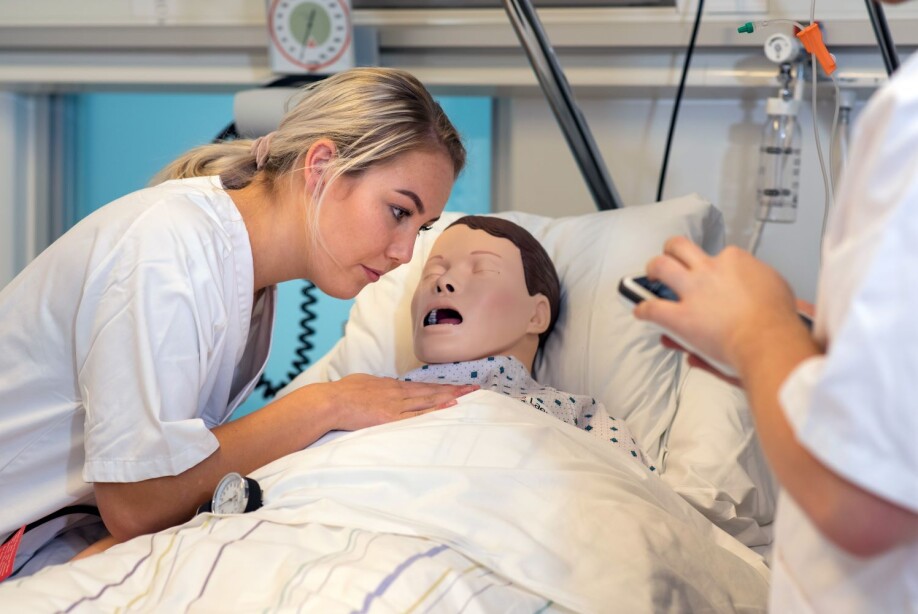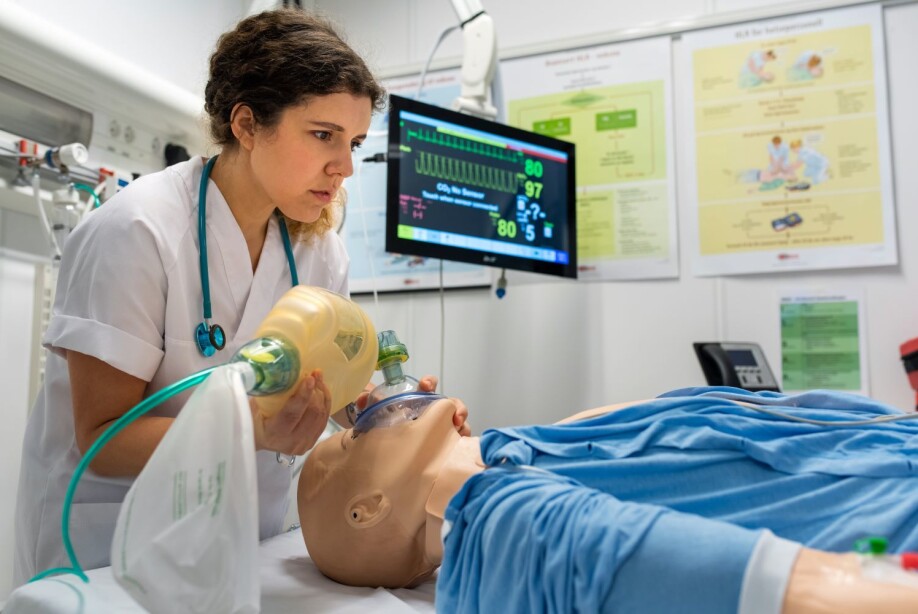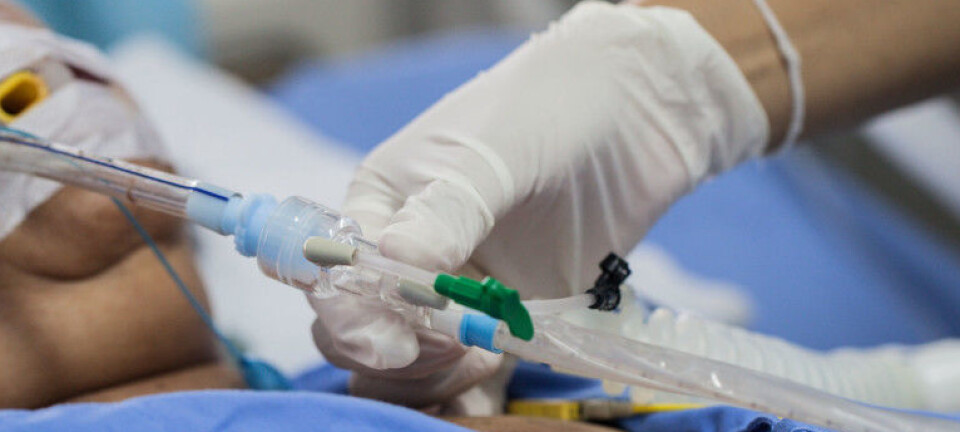This article is produced and financed by the University of Agder - read more

Nursing students want more training using patient dummies
Students become more confident and learn more from practicing on computer-controlled patient dummies a new doctoral project at the University of Agder claims.
“Students who received instruction with patient dummies demonstrated greater knowledge and confidence compared with those who did not,” says Kristine Haddeland.
She is an associate professor at the University of Agder (UiA) and recently defended her doctoral dissertation on the use of computer-controlled patient dummies in nursing training.
Technology has long been used in nursing education to imitate real-life situations from the healthcare sector. In the language of nursing, this type of teaching is called high-fidelity simulation. By using patient dummies and putting nursing students in different roles, you can imitate situations that may occur with real patients in a hospital or a care home.

Patient dummy operated from the control room
The patient dummies behave almost like ordinary people. They may faint. They may have epileptic seizures. The heart may stop. Blood pressure can drop or rise. Heart rate can go up and down. Oxygen saturation can vary. Sweat can trickle, wounds bleed and urine leak.
The nursing teacher stays with the students in the simulation room. Students who have the role of observer can watch from another room or be inside the simulation room. Another teacher operates the dummy from the control room, using an advanced computer programme. Heart rate, blood pressure and other important health data is controlled and adjusted from here.
The information is displayed on a patient monitor for the students to see. The monitor is like the one nursing students encounter when they have clinical practice at the hospital. The task of the students in the simulation room is to respond to acute changes in the patient dummy and carry out the appropriate treatment.
Drama on the ward
This is how the drama can unfold: The patient dummy has been feeling bad and has called for help. The students check the monitor for blood pressure and heart rate. They also see if the dummy is breathing heavily.
“We create a realistic situation where the students can gain relevant experience managing acute changes in a patient. The patient dummies are easy to programme. Thus, we can train students in most of the acute events they may face in clinical practice,” says Haddeland.

Learn more and gain self-confidence
The main goal of her doctoral project has been to find out what students learn when patient dummies are being used in their training. The dissertation was divided into three parts.
The first part reviewed previous research on patient dummies and learning outcomes.
The second part was about developing a questionnaire to measure the level of knowledge and self-confidence in a scientific way that can be tested.
The third study compared two groups of students, where one received instruction with patient dummies and the other did not (randomized controlled trial).
A total of 158 nursing students from two different universities participated. A group of students and a group of six nursing teachers were interviewed about the experience of using patient dummies.
Observers learned the most
“The level of knowledge and self-confidence increased more among the nursing students who completed the teaching programme with patient dummies compared with those who did not,” says the researcher.
Both before and after each session, the students answered questions about the condition of patients in emergency treatment. They were asked questions like: “What is a normal heart rate for healthy adults?” and “What happens to the pulse and blood pressure if there is acute bleeding following surgery?”
A surprising finding was that nursing students in observer roles learned more than students who were treating the patient.
“It could be that nurses who treat the patient dummies are more stressed than those who observe. But it shows that we should provide more teaching hours using patient dummies to let the students experience the situation in various roles,” says Haddeland.

Safe environment for learning
A safe learning environment, being able to learn in different roles, and to be taught in realistic environments, were highlighted as important by both the nursing students and the teachers who participated.
At UiA, the plan is to always let nursing students receive instruction with patient dummies before they start their internships in hospitals and care homes. There are a total of six clinical internships in the nursing programme.
“The students request patient dummy training, also when they are in clinical practice. They experience incidents at the hospital or in other placements that they would like to practice in a safe environment before returning to the internship,” the researcher says.
Translated by Anna Svala Johannesdottir, UiA
Reference:
Kristine Haddeland: Effects of Using High-Fidelity Simulation on Nursing Students’ Recognition of and Response to Deteriorating Patient. PhD thesis, University of Agder, 2020.


































